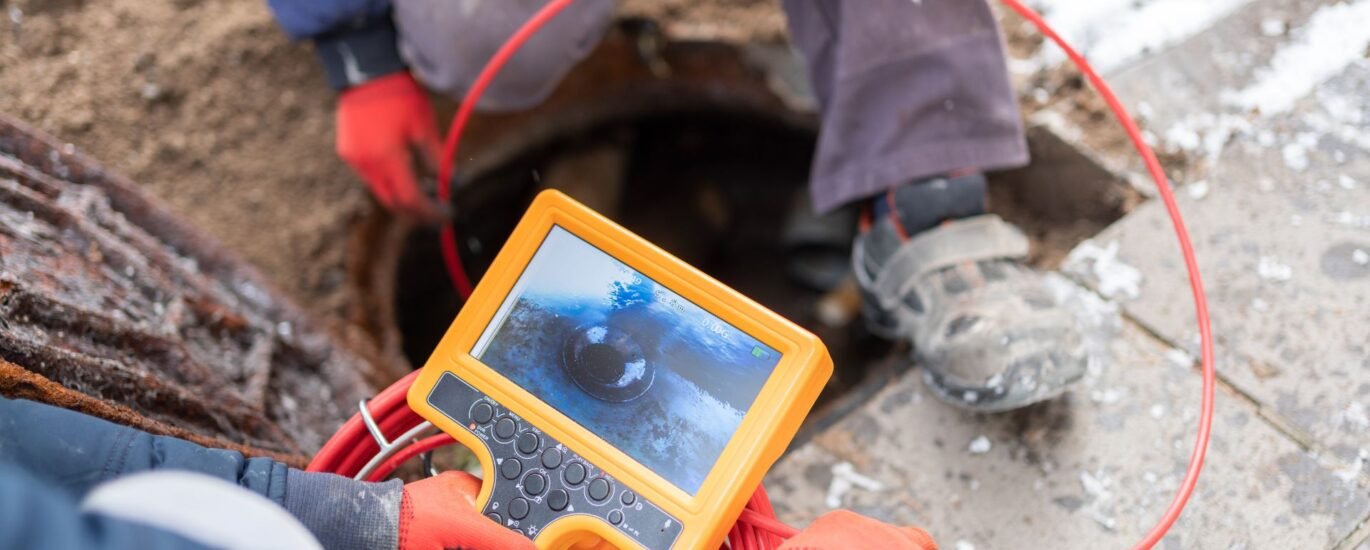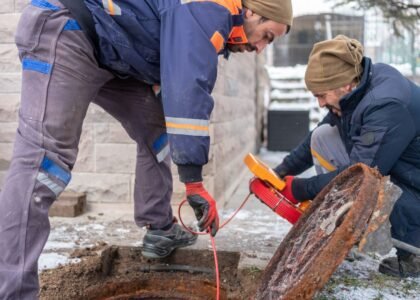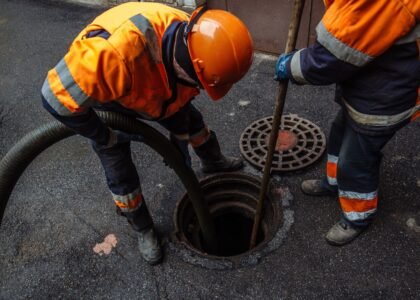Introduction
Once you’ve identified sewer line trouble, you’ll face choices: traditional (open trench) repair or a trenchless method. Each has pros, cons, and suitability depending on your situation. In this post, we’ll compare them side by side, help you understand which option may suit your home best, and show how both tie back into overall sewer line replacement strategies. Don’t forget—you can always refer back to our sewer line repair & replacement page for more detail or get in touch for project advice.
What Is Traditional (Open Excavation) Repair?
How It Works
- A trench is dug along the damaged pipe section.
- The damaged portion is removed and replaced with a new pipe.
- Connectors, backfill, and site cleanup finish the job.
When It’s Appropriate
- Damage is localized and easily accessible.
- Ground conditions or terrain make trenchless methods impossible.
- Cost is a priority over disruption.
- Old pipes are unstable and multiple breaks exist.
Advantages & Drawbacks
| Pros | Cons |
|---|---|
| Straightforward, tested method | High disruption (driveways, lawns, landscaping) |
| Can handle complex or irregular damage | Longer restoration and cleanup time |
| Less dependent on pipe condition | May require heavy equipment and full digging |
What Are Trenchless Methods?
Trenchless repair is less invasive by design. You dig only small access pits rather than a continuous trench.
Pipe Bursting
- A bursting head breaks apart the old pipe while pulling in a new one behind it.
- The new pipe takes over the path of the old line.
Cured-In-Place Pipe (CIPP) Lining
- A flexible liner with resin is inserted into the existing pipe.
- The liner is inflated and cured (hardened), forming a new seamless pipe.
- This technique is ideal when the pipe is still intact but has cracks or leaks.
Advantages & Limitations
| Pros | Cons / Limitations |
|---|---|
| Minimal digging & landscape disruption | Not always viable for fully collapsed pipes |
| Faster project timelines | Access pits still needed at ends |
| Reduced restoration costs | Pipe must be mostly intact for lining |
| Ability to upgrade in diameter (with bursting) | Higher material and labor costs in some cases |
Side-by-Side Comparison
| Feature | Traditional / Open Trench | Trenchless (Bursting / CIPP) |
|---|---|---|
| Disruption to landscaping | High | Low |
| Time to complete | Longer | Often shorter |
| Cost of restoration | Potentially high | Often lower |
| Suitability for collapsed pipes | Yes | Depends; bursting may still work |
| Soil/terrain constraints | Flexible | May struggle in rocky soil |
| Longevity | Excellent (if installed well) | Excellent (modern materials) |
How to Choose Between Them
- Inspection results matter. A thorough sewer camera inspection will show if the pipe is mostly intact (good for lining) or largely destroyed (favoring open replacement).
- Extent of damage. Large collapses or multiple breaks might demand full replacement via trench.
- Access & surroundings. If your yard has a pool, landscaping, or structures above the pipe, trenchless is often less disruptive.
- Soil and ground conditions. Rocky soil, tree roots, or unstable substrates can influence feasibility.
- Budget and timeline. You may accept more disruption to save cost, or vice versa.
- Future-proofing. If you’re upgrading your home or expect higher usage, you may choose a method that allows for a larger pipe.
How Sewer Line Repair & Replacement Tie Together
Even when repair is possible, sometimes full replacement makes sense:
- Frequent repairs accumulate cost. If you’ve repeatedly fixed sections, replacement can be more economical in the long run.
- Entire pipe is failing. When multiple sections show significant deterioration, replacing the full line can prevent repeat issues.
- Upgrading capacity. Homes undergoing renovation or expansion often need larger lines, best achieved during replacement.
- Better compatibility with trenchless. You may combine methods: replace the worst sections while using lining to reinforce others.
In all cases, sewer line repair and replacement are part of one continuum. The same inspection, planning, and execution processes apply regardless of scale.
What to Expect When You Hire a Professional
- Initial Inspection & Camera Survey: Experts will run a live camera to pinpoint damage.
- Damage Assessment & Method Recommendation: Based on condition, they’ll explain whether repair, lining, or replacement is ideal.
- Repair or Replacement Execution:
- Traditional: dig, replace, backfill.
- Trenchless: perform bursting or lining. - Testing & Final Inspection: A second camera run confirms success.
- Site Restoration: Refill trenches, restore landscaping, and ensure tidy cleanup.
Because both approaches require planning and testing, sometimes combining methods yields the best long-term result.
Tips to Make Repair or Replacement Go Smoothly
- Clear the work zone: move vehicles, furniture, or obstacles.
- Mark utility lines and hidden pipes to avoid conflicts.
- Choose plants with shallow roots far from pipe routes.
- Ask your technician to walk you through the inspection footage.
- Monitor newly restored zones for settling or sogginess over weeks.
Conclusion
Deciding between traditional and trenchless sewer line repair isn’t always straightforward. Each has merits depending on damage severity, site conditions, and budget. The key is reliable inspection, choosing the right method, and ensuring quality execution.
For detailed information on our sewer repair and replacement services, you’re welcome to revisit our sewer line repair and replacement service page. And if you’re ready to move forward or want a consultation, feel free to contact us — we’re here to help you pick the best solution for your home.



